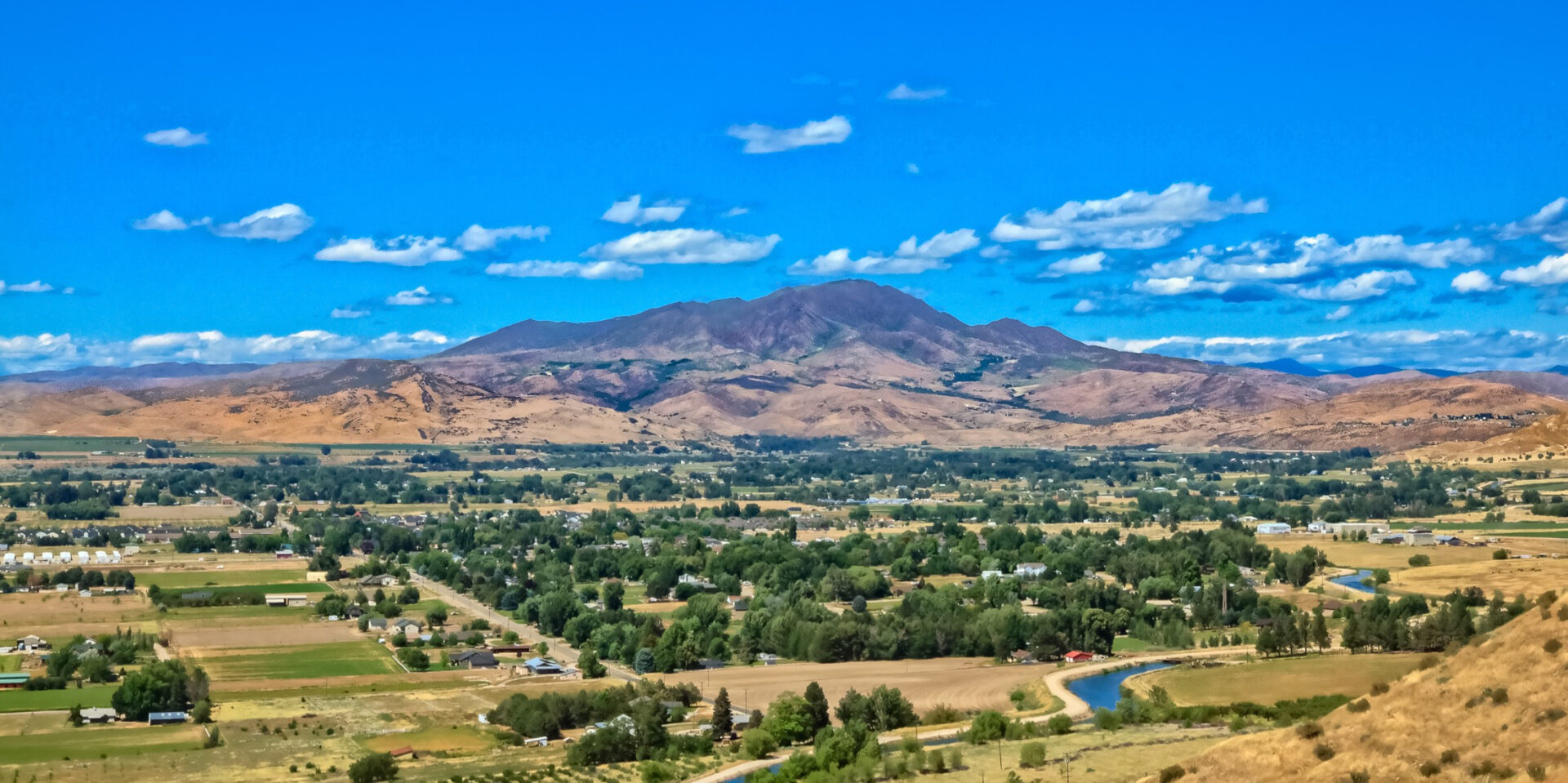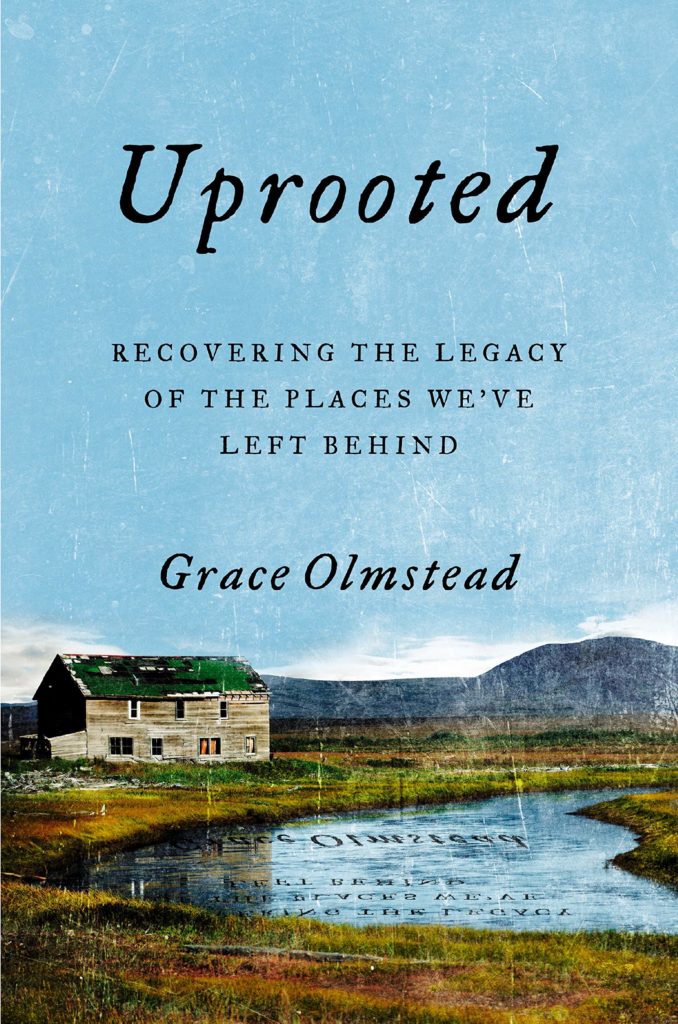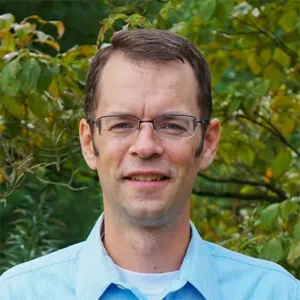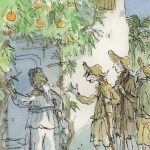Jackson, MI. In “The Custom-House,” his prefatory essay to The Scarlet Letter, Nathaniel Hawthorne wrestles with his generational roots in Salem. One of his ancestors, infamously, presided over the Salem witch trials here, and he now finds himself appointed to a government position at the Salem Custom House. But while Hawthorne concludes (wrongly, as it turns out) that he is destined to “make Salem my home,” he worries that this long family connection to the place is “an unhealthy one” and should be broken: “Human nature will not flourish, any more than a potato, if it be planted and replanted, for too long a series of generations, in the same worn-out soil. My children have had other birthplaces, and, so far as their fortunes may be within my control, shall strike their roots into unaccustomed earth.” This sentiment expresses an axiom in American, settler culture: the way to maximize individual opportunity and flourishing is to seek out richer soil. In an indication of the enduring power of this idea, Hawthorne’s resonant concluding phrase—his desire for his children to strike their roots into unaccustomed earth—forms the title for a rich collection of short stories by Jhumpa Lahiri about the lives of Indian immigrants seeking to plant themselves in unaccustomed American soil.
Yet the fiction of both Lahiri and Hawthorne also narrates the costs that this approach to flourishing accrues. On the one hand, there is the psychological and spiritual trauma that uprooting can cause. Even more insidiously, the soil and its inhabitants left behind by opportunistic transplants can suffer long-term harm. The plot of The Scarlet Letter suggests—in contrast to Hawthorne’s claim in his preface—that the hard faithfulness of Hester Prynne, who made her life in the uncongenial soil of Puritan Boston, brings real healing and redemption to her neighbors and even, perhaps, to herself.
Gracy Olmstead’s new book Uprooted: Recovering the Legacy of the Places We’ve Left Behind explores these tensions through the lens of her hometown: Emmett, Idaho. Uprooted weaves together several different stories. In part, it’s a biography of a town. In part, it’s an investigation into the challenges threatening rural communities and sustainable farming. In part, it’s a memoir of a young woman who grew up with multi-generational roots in a farming community and, despite valuing this gift, now finds herself living across the country and seeking to put down roots in a new place.
Olmstead begins her history of Emmett in the days before European settlers arrived, and as she narrates some of its inhabitants and stories and events over the past several hundred years, a portrait emerges of a place that has long been in flux. Immigrants from Scotland or Peru or the Basque region of Spain have now been joined by some from Portugal and others from Mexico. There have been agricultural booms and busts as farmers built dairy farms and sheep flocks and planted cherry and plum orchards. One of the big shifts in Emmett’s life was the date the railroad arrived, in 1902. Suddenly, its population exploded as farmers were able to ship their fruit, lambs, and other products to distant markets. The town’s population tripled in two years. Yet this access to global markets also rendered the town vulnerable to swings in commodity prices and the inexorable logic of big ag: get big or get out. Although the town still celebrates its annual cherry festival, there are only 276 acres of fruit trees, down from approximately 3,500 acres in 1979. Today, suburban sprawl from Boise threatens the fertile soil that still remains.
Olmstead is honest about the difficulties that have marked life for residents of Emmett: “Farming has never been an easy endeavor. Those who work the land have often struggled from season to season, battling drought and pestilence. Commodity farmers have also always dealt with fluctuations in national and international markets, which can quickly turn a season of bounty into one of waste and bankruptcy.” In many ways, the narrative of boom and bust, exploitation and impoverishment she relates is a version of a story that has been told many times: Read Hamlin Garland. Read Laura Ingalls Wilder. Read Willa Cather. Read George Washington Carver or Liberty Hyde Bailey or, of course, Wendell Berry. Good farmers have always worked under threat of bankruptcy. Yet Olmstead finds plenty of cause for hope as she talks with farmers in Emmett. Many are finding creative ways to make a good living and improve the health of their land. Some raise grass-fed beef or sell produce at farmers’ markets, and others grow row crops such as sugar beets. Still others grow a variety of crops for seed—from sweet corn to the African grain teff.
As she narrates this agrarian history of Emmett, Olmstead follows Berry in describing healthy soil in both biological terms and cultural terms. As she argues, “Rootedness and perennial belonging often make sense to us on a scientific, ecological level. We know (or are at least realizing) what the soil needs for biological health and flourishing. But there seems to be a widespread belief in our society that these principles do not apply to people: that we are different, that our minds and souls are, in fact, better suited to wandering and restlessness than to faithful belonging, the choice to stick.” And yet, Olmstead warns, when a community’s human inhabitants wander off in search of better opportunities, they cause lasting damage: “If we . . . deplete the ground’s resources, future generations pay the price. I fear that as those of us who grew up in the soil of our small farm towns leave, we remove the material that should have remained, that would have resulted in hope and nourishment for the next generation.”
This focus on the soil enables her to turn Hawthorne’s claim about potatoes and humans on its head: it’s one thing to ask whether worn-out soil might prevent a potato or a person from flourishing, but we should also ask what effect uprooting plants and people might have on the soil they leave behind—and the lives that soil sustains. Time and again in her narrative, Olmstead reveals the suffering caused when creative, smart, hard-working people leave the place the nourished them because they think they can maximize their personal wealth or happiness somewhere else. This reality is both cultural and ecological: “Roots absorb water and nutrients from the soil. They anchor and support the plant we see aboveground. But roots also are essential to the well-being of the soil itself—part of an intricate, living system we often ignore, because it’s down beneath our feet.” This is the core principle of her narrative: roots do not just serve the individual person or plant—they also are vital to the health of one’s soil, place, and neighbors.
Yet the rewards for uprooting and moving elsewhere are enticing. One of the threats to good farming in Emmett today is that successful farmers can no longer simply grow commodity crops and sell them wholesale. Farmers now have to be incredibly smart, driven, creative, and entrepreneurial to find ways to turn a profit and tend the health of their land. And yet young people with these gifts and education are the ones who are most likely to make the perfectly rational choice to seek more fertile ground and invest their energies in a place and economy that will offer greater rewards for their talents. She talks to a farmer named Lance Phillips, who runs Crimson Gem Orchard and relies on U-pick fruit and homemade fruit products to make his land profitable. She concludes that “Lance is part scientist, part salesman, part activist, part entrepreneur, and part farmer.” As he tells Olmstead, “our system has evolved … to require that a farmer becomes a jack-of-all-trades in order to survive.” Olmstead’s narrative confirms the picture painted by books like David Masumoto’s Epitaph for a Peach or Joel Salatin’s You Can Farm: The Entrepreneur’s Guide to Start and Succeed in a Farm Enterprise. Contemporary sustainable farmers are doing incredibly creative and intellectually challenging work, but the monetary remuneration they receive often doesn’t reflect the value of their labor.
The irony is that Lance isn’t an Emmett native; he chose this place that so many others have left: “Lance is a transplant to Emmett—but he brings to the town a dedication and loyalty that perpetuate the best virtues of past locals like Bob Benson and Grandpa Dad. In a town where many younger natives are leaving, people like Matt Williams and Lance Phillips could be the ones to restore and replenish a depleted landscape.” Yet it seems these creative, young farmers are the exceptions the prove the rule: “In our era, entrepreneurs seldom flock to villages or rural spaces, especially those in need of renovation or care. We move to places that will offer us something: to places that fit the consumptive cadences of our time, not to places that might ask something of us. And while Emmett does offer many goods to its present and future inhabitants, it also needs investment and love—a new generation of stickers, who are willing to make this valley their forever home.” This valley has long depended on attracting good people who will care for it, not boomers who will exploit its resources and impoverish it, so the cultural forces that draw its young people away present a grave threat. As another farmer, Peter Dill, tells Olmstead, “The farm must be winsome for young people, . . . because if the kids don’t want to stay, the future is lost.”
Drawing on the work of writers from Wallace Stegner to Patrick J. Carr and Maria J. Kefalas, Olmstead offers a kind of taxonomy of mobility. The Stuck would like to leave depressed, run-down communities but don’t have opportunities to leave. The Rooted (both natives and transplants) have chosen to live here; they are Stegner’s “stickers.” And then there are the Boomers who move from place to place looking for opportunities to enrich themselves and maximize their personal happiness. This is a helpful heuristic, but as Olmstead talks to many residents of Emmett, the limits of any rigid taxonomy become clear. Berry concludes as much in one of his essays: “All of us, I think, are in some manner torn between caring and not caring, staying and going.”
Thus even the Stickers aren’t unalloyed heroes in Olmstead’s narrative. Near the end of the book, she comes to see the shortcomings of her Grandpa Dad whom she grew up idolizing. His independence and maverick streak prevented him from working well with his son. Tragically, the “staunch self-sufficiency” that led him to love and care for his farm also “prevented him from sharing his farm with the next generation.” Successful, enduring farming communities rely on a broader membership than the nuclear family. Olmstead’s policy suggestions for strengthening rural associations and communities, for restoring the civic and economic trellises that hold would-be Stickers on the land, echo, in many ways, the ones James Rebanks outlines in English Pastoral. How do we properly value and reward the ecological and social goods nurtured by healthy farming? How do we account for and charge the costs of pollution and erosion that farmers have historically been able to externalize?
I mentioned that Uprooted is not just the history of Emmett, and it’s not just a sociological and economic consideration of the plight of rural farming communities; it’s also a memoir of a young woman who left Emmett to go off to college and now lives with her family in Virginia. Olmstead confronts the irony of her situation with unflinching honesty. When she left as a teenager, she didn’t reckon with how her departure might damage her place: “I was completely oblivious to my role in that decay and loss. Although I ached for what I had left behind, turning the memories over and over in my mind, I didn’t even consider the fact that I was one of the kids that had blown away.” Now, however, she is keenly aware of the costs that come with uprooting, even as she remains grateful for what she has learned, who she has come to know, and where she lives: “I often feel like I don’t belong in Idaho or in Virginia: both defined by my roots and remade by my present reality.” Olmstead notes that being stretched between these two places “has, in many ways, been good for me. I can see the ways it has deepened and complicated my vision, given me new understanding, insight, and, hopefully, empathy. But I do feel worn out, sometimes, going back and forth.”
Lawrence Buell has suggested that in a contemporary, mobile society, many people experience “place-attachment” in ways that are “more like an archipelago than concentric circles.” This seems to describe Olmstead’s experience, as her responsibilities and sense of belonging are split between places situated across the country. Like Olmstead, I am the only member of my family who has left the area where I was raised. And like her I have experienced the paradoxical effects of this uprooting. As she puts it, “I am the only one who really, truly left. And perhaps because of that, I think I am the only one who constantly looks back toward Emmett, toward the generations of family past who built something in its soil. Living in Virginia showed me my roots.” She never settles the question of if or when she and her family might move home. They have many roots in Virginia now, with the accompanying obligations to its soil and community. Olmstead wonders if her life might follow a similar trajectory to that of her Grandma Mom, who was a transplant to Emmett and became a great blessing to that place: “Everywhere she lived, she chose to be a perennial. Surely, those of use who’ve moved away from our homelands can aspire to that same grace and passion.” This is my hope as well: there is still much good that transplants can do, and some things they can, in fact, see more clearly about both the places they’ve left and the places in which they’ve put down roots. Olmstead does an admirable job of naming the unique goods available both to those who bloom where they were born and to those who bloom where they have been transplanted.
Olmstead describes the process of writing this book as “an exercise in discernment” regarding whether or not she and her family should return to Emmett. Discerning one’s responsibilities and calling regarding place is a difficult task, and Olmstead articulates the questions that should be at the heart of this process: “There are many reasons … to leave a place—even a place we love. But why we leave and what we cultivate once we’ve moved to new ground are important questions to consider.” If she does return home, it won’t be with a simplistic, nostalgic view of Emmett. Rather, “it will be a conscious choice of love, made to a people and a place that are messy, complicated, broken—and precious beyond imagining.”
Uprooted should be a provocation and an example for readers to reconsider their own relationship to their place: What is the history of your place? What is the history of its soil? How has your life either enriched or impoverished the places from which it has drawn sustenance? Olmstead serves as a compassionate and discerning guide through this thicket of questions, and her admonition near the conclusion of the book applies to all of us, the recent transplants and the long-rooted alike: “Wherever we decide to live, we must learn to stick: choosing to invest ourselves in place, to love our neighbors, to leave our soil a little healthier than it was when we arrived. Every place will be imperfect. But love suggests that we ought to keep trying anyway: to keep sowing seeds of service and generosity in the lands we love.” The soil in our accustomed earth may indeed be worn-out, but that does not negate our responsibility to do what we can to tend its health.








